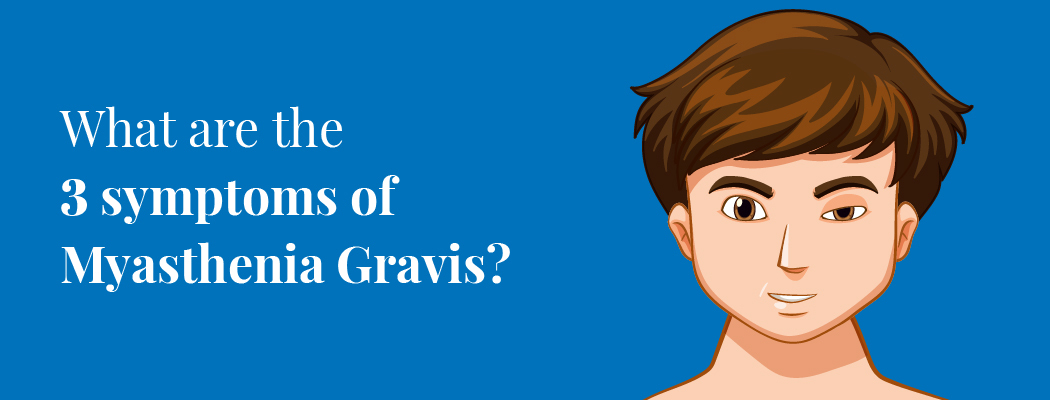What is Myasthenia Gravis? Causes, Symptoms, & Treatment
March 15, 2025

Myasthenia gravis (MG) is an autoimmune condition, which means the body’s immune system unintentionally targets its tissues. As a result, the interaction of the nerves and muscles is impacted by MG (the neuromuscular junction).
People who have MG become unable to voluntarily control their muscles. As a result, they feel varying degrees of weariness and muscle weakness. They might be unable to move their limbs, neck, eyes, or facial muscles. MG is a chronic neuromuscular condition.
Myasthenia gravis, “grave muscle weakness,” is a common condition with a typical life expectancy.
The eyelids usually droop because the muscles around the eyes are generally the first to be affected. In addition to breathing, eating, swallowing, speaking, and limb and arm paralysis, patients may also experience double vision. Heart muscles and other involuntary muscles are unaffected.
Symptoms frequently get worse with exercise and get better with rest or a full night’s sleep. Although there is no cure, treatment can reduce or even eliminate symptoms.
Who is Susceptible to Myasthenia Gravis?
Most people with MG are men and women between 50 and 80. Teenagers account for about one in ten occurrences of MG (juvenile MG). The condition can affect all ages, but children are rarely affected.
These factors raise risk:
- History of autoimmune conditions like lupus and rheumatoid arthritis
- Infections
- Malaria, cancer, and heart arrhythmia medications
- Surgical procedures
- Thyroid disorder
Types
The most prevalent form of this neuromuscular condition is autoimmune MG. Autoimmune MG may be:
Ocular: Weakness in the muscles that control the eyes and eyelids. You might have trouble keeping your eyes open, or your eyelids might droop. Many people have double vision. MG frequently manifests first as eye weakness. Within two years of the first symptom onset, over half of those with ocular MG progress to the generalized variety.
Generalised: The eye, as well as other body regions like the face, neck, arms, legs, and throat, are affected by muscle weakness. Speaking, swallowing, lifting your arms above your head, standing up from a sitting position, and climbing stairs may all be difficult for you.
How Does Myasthenia Gravis Affect Pregnancy?
Rarely does pregnancy cause MG symptoms to appear for the first time. If you already have MG, your symptoms could worsen during pregnancy or after giving birth. On the other hand, some people’s MG symptoms get better when pregnant.
Certain MG medications are not safe to use while nursing or when pregnant. Your doctor can help you navigate this phase and ensure a safe pregnancy.
Signs and Symptoms
Weakness in your controllable, voluntary skeletal muscles is the primary symptom of MG.
The inability of muscles to contract is typically caused by their inability to react to nerve impulses. Weakness happens when the nerve and muscle cannot communicate properly due to improper impulse transmission.
MG-related weakness typically worsens with increased activity and improves with rest. The following bodily parts may exhibit MG symptoms.
Eyes
MG can result in double or hazy vision and eyelid drooping. Your ocular muscles could also become generally weak.
Face
Your facial expressions could vary due to MG and facial paralysis.
Throat
Symptoms of MG that affect the throat muscles include:
- Difficulty speaking
- Breathing
- Eating
- Chewing
- Hoarse voice
- Neck weakness makes it difficult to hold your head up
Chest
MG can cause severe, even fatal, symptoms in the muscles of the chest area, including the following:
Respiratory failure may result in a myasthenic crisis caused by weakened chest muscles and the diaphragm.
Legs and Arms
The muscles in your arms and legs may also be impacted by MG, resulting in the symptoms listed below:
- Weakness in your arms, hands, and fingers due to exhaustion
- General issues with leg weakness, climbing stairs, or lifting things
- Not every person will have all the symptoms, and the muscle weakness level might vary daily. If the symptoms are not treated, they usually get worse over time.
Causes
Both contagious and hereditary forms of myasthenia gravis do not exist. Instead, it typically appears later in life due to the body’s immune system attacking healthy muscle receptors. This prevents a substance from acting as a stimulus for muscular contraction.
When a woman with myasthenia gravis transfers the antibodies to the fetus, a short form of myasthenia gravis may manifest in the fetus. However, it usually goes away in two to three months.
Diagnosis
Your symptoms and a few tests can help your doctor determine if you have myasthenia gravis. Your doctor will enquire about your medical history and symptoms throughout the physical examination.
Testing how you react to specific medications is a popular method for diagnosing myasthenia gravis. When you are given an anticholinesterase medication, muscle weakness frequently temporarily gets significantly better. Myasthenia gravis has been diagnosed if you respond to the medication.
Additional tests that could be performed include
- Blood tests: These examinations search for antibodies that may be present in Myasthenic Gravis patients.
- Genetic tests: These tests are performed to look for illnesses that run in families.
- Repetitive nerve stimulation is a technique that is used to identify myasthenia gravis.
- Electromyogram (EMG): a test that gauges a muscle’s electrical activity. An EMG can find aberrant electrical activity in the muscles that results from illnesses and neuromuscular disorders.
Treatment Options
Myasthenia gravis is a chronic neuromuscular disorder with no known cure, but several treatment options can help manage symptoms and improve muscle strength. The primary aim of treatment is to limit immune system attacks on the neuromuscular junction while improving communication between nerves and muscles.
Medications
Doctors commonly prescribe medications to alleviate symptoms and regulate immune system activity.
- Cholinesterase Inhibitors – Medications like pyridostigmine enhance nerve-muscle communication by inhibiting the breakdown of acetylcholine. This can temporarily enhance muscle strength but does not stop disease progression.
- Corticosteroids – Prednisone and similar drugs suppress immune system activity to slow down the production of harmful antibodies. Long-term use, however, may lead to side effects such as weight gain, osteoporosis, and high blood sugar.
- Immunosuppressants – Medications like azathioprine, mycophenolate mofetil, and tacrolimus help weaken the immune system’s attack on nerve signals. These drugs may take months to show significant effects and require careful monitoring due to potential side effects.
- Monoclonal Antibodies – Biologic drugs like eculizumab and rituximab are used in cases where other treatments do not work. They target specific immune responses contributing to myasthenia gravis.
Plasma Exchange and Intravenous Immunoglobulin (IVIG)
In severe cases, rapid treatments are used to remove harmful antibodies from the blood:
- Plasmapheresis (Plasma Exchange) – This process filters out destructive antibodies and replaces the plasma with healthy donor plasma. It offers temporary relief, often used before surgery or during a crisis.
- Intravenous Immunoglobulin (IVIG) – A concentrated dose of antibodies from healthy donors is given to modify the immune response. It helps alleviate symptoms temporarily and is commonly used in emergency situations.
Thymectomy (Surgical Removal of the Thymus Gland)
The thymus gland contributes to regulating the immune system. Some people with myasthenia gravis, especially those with a thymoma (tumor), may benefit from a thymectomy. This surgery can lead to long-term symptom improvement and, in some cases, complete remission.
Prevention
Doctors are unaware of the causes of autoimmune disorders like MG. There is nothing you can do to stop it from happening.
How Can I Lessen the Effects of Myasthenia Gravis?
These actions, if you have MG, can reduce tiredness and increase muscle strength:
- On particularly hot days, stay inside as much as possible. If you feel warm, use cold compresses on your forehead and neck. (MG symptoms can worsen in hot weather.)
- Regular exercise will help you feel better, have more energy, and build stronger muscles.
- For energy, include a lot of protein and carbohydrates in your diet.
- Start the day’s most taxing tasks when you’re feeling your best.
- Throughout the day, take breaks for naps or rest.
When Should I Get in Touch with My Doctor?
If any of the following occur, contact your doctor immediately: A rheumatologist specializes in treating autoimmune conditions like myasthenia gravis.
- Double or blurred vision
- Walking, talking, or eating is difficult
- Extreme muscle weakness or tiredness
- Respiratory problems or shortness of breath
Frequently Asked Questions
1. What is the life expectancy of myasthenia gravis?
Although there is no known treatment for MG, most patients live normal lives. Only 3 to 4 of every 100 MG patients pass away as a result of their disease. Over a third of those with MG died young in the past.







